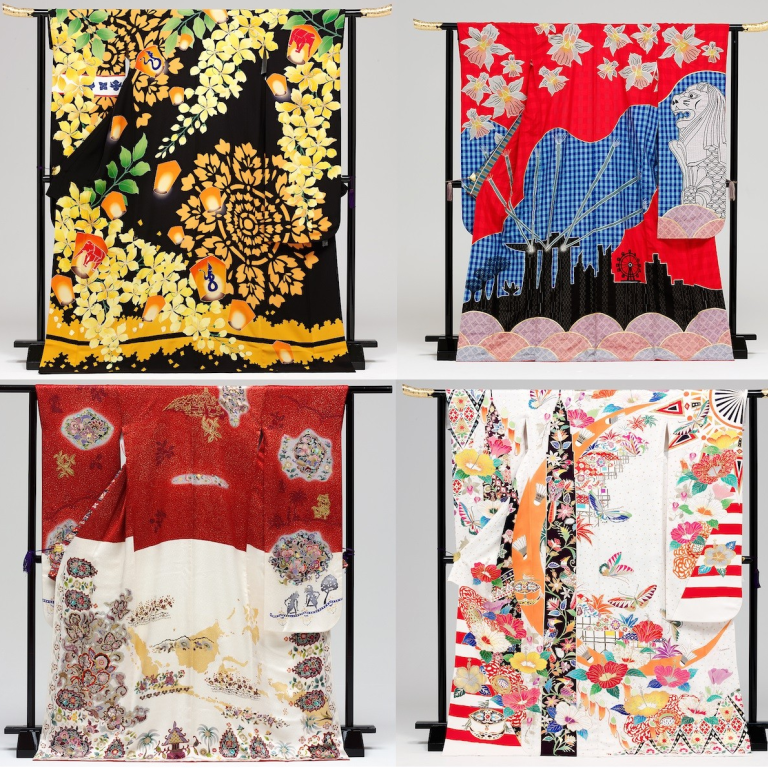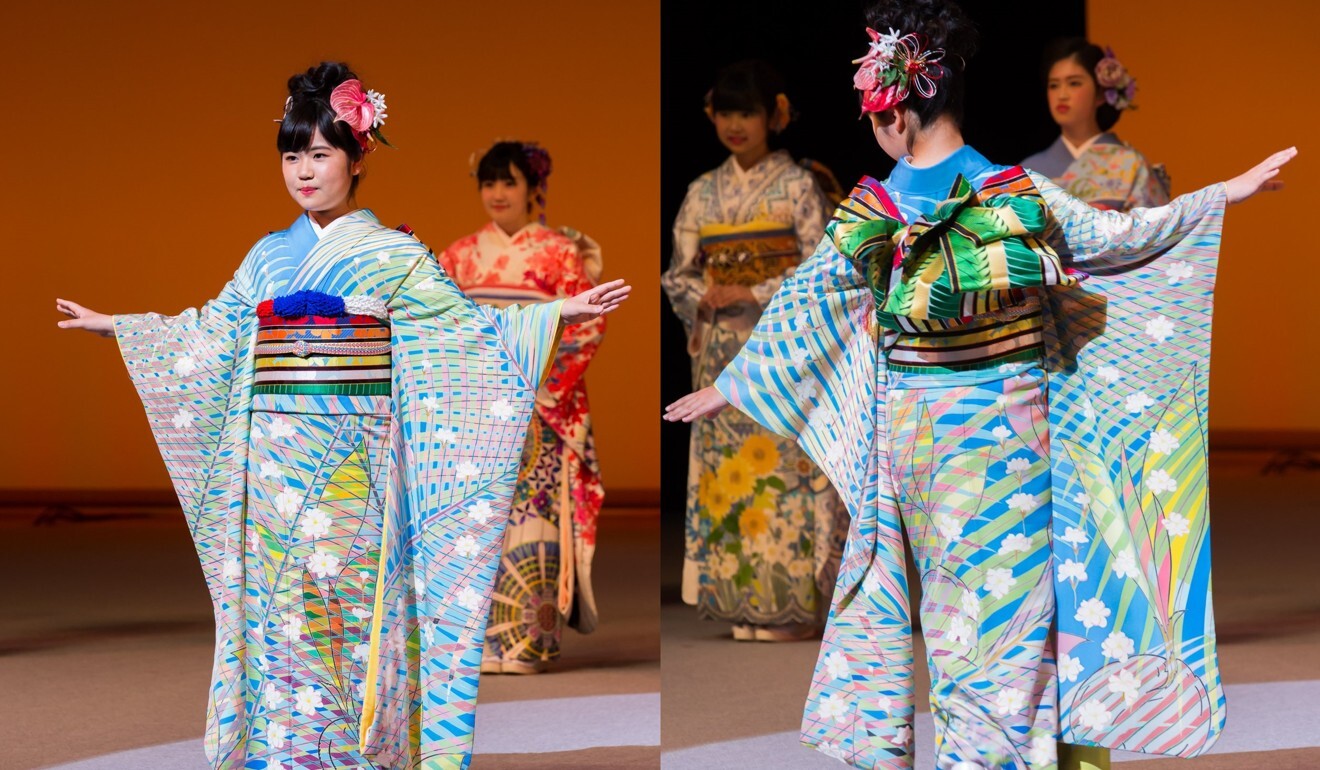
Olympic kimonos showcase Singapore, Malaysia, Indonesia’s cultures – and many more besides
- More than 300 Japanese designers worked on the 213 kimonos for some six years, with each full set costing about US$18,200 to make
- Every team competing at the delayed Tokyo 2020 Olympics is represented with a unique design as part of the Imagine Oneworld Kimono Project
More than 300 Japanese designers worked on the 213 garments for some six years, with each full set – comprising the kimono, obi (sash) and accessories – costing about 2 million yen (US$18,200) to make using traditional hand weaving and dyeing techniques.

Nobumichi Tejima, who led the project, said the designers had to gain a deep understanding of each place’s history, culture, motifs and landmarks to create garments that were accurate and respectful, following discussions with ambassadors and – in some cases – several visits to the places in question.
Singapore’s kimono design – first unveiled at the country’s Tokyo embassy in 2019 – features the city state’s skyline, with Gardens by the Bay, Marina Bay Sands and the Singapore Flyer clearly visible, alongside the iconic Merlion.
Malaysia’s kimono features the star, stripes and moon from the country’s flag – as well as the Petronas Twin Towers – and is inspired by traditional batik patterns, according to its designer, Takehana Sensho, who worked with 40 students from Fukuoka Prefectural Kurume High School to create the garment.

Shigeo Okajima, Okaju’s president, approached a batik designer in Indonesia to help create the kimono and the effort certainly seems to have paid off with social media users describing the end result as “very beautiful”.
On Twitter, the #KimonoProject hashtag was widely used by people sharing some of their favourite designs and expressing support for the project.
Hungarian diplomat Katalin Bogyay shared pictures of her country’s kimono design and described it as “really beautiful: historical, traditional”, with its representations of architectural splendour and folk art patterns.
One Canadian Twitter user said they were “absolutely in love with Canada’s design”, which draws inspiration from its national symbol – the maple leaf – and the Canadian Rockies.
Designed by Kisaburo Ogawa, who specialises in a type of traditional Japanese textile known as kenjo hataka-ori, the Canadian kimono uses colours from the country’s flag combined with visualisations of the Niagara Falls and the northern lights.
Kim Kardashian isn’t the first Westerner to sexualise Japan’s kimono, and won’t be the last
Josiah Chua, a Singaporean fashion stylist, said he was a fan of the designs for Singapore and Malaysia as “floral motifs and bright colours are a big favourite of mine”.
The project was an “amazing opportunity to showcase each country’s signature icons and motifs in a kimono”, he said.
Echoing his sentiments, fashion designer Keith Png, who has designed outfits for celebrities such as Zhang Ziyi and Lin Chi Ling, described the whole project as “bold” and “challenging”.
“I like the idea of taking something so iconic such as the kimono and customising it for different countries,” he said. “It reflects what the Olympics is all about: unifying the world through sports, but in this instance, through the kimono.”

